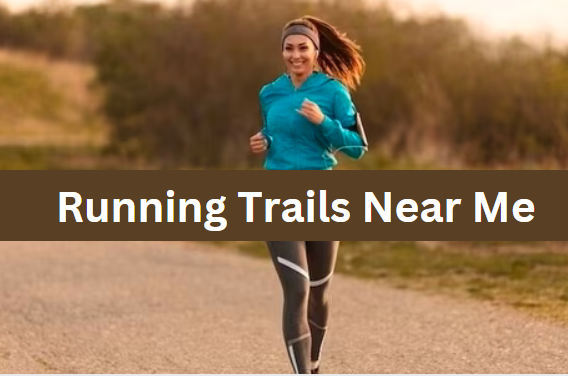Whether you’re an avid runner or someone looking to start a new fitness routine, finding the right running trails near you can make a world of difference. With the diversity of landscapes and climates across the USA, there are countless running trails that cater to all levels of experience and preferences.
This article will guide you through some of the best running trails near you, offer tips for choosing the right trail, and provide insights into maximizing your running experience.
Contents
- 1 Understanding the Importance of Running Trails
- 2 Finding the Best Running Trails Near Me
- 3 Top Running Trails in Different Regions of the USA
- 4 Tips for Choosing the Right Running Trail
- 5 Maximizing Your Running Experience
- 6 FAQs about Running Trails Near Me
- 7 Conclusion
Understanding the Importance of Running Trails
Running trails offer a variety of benefits compared to running on roads or treadmills. Here are some key advantages:
1. Natural Scenery
Running trails often wind through parks, forests, and other natural areas, providing a visually stimulating environment that can make your run more enjoyable and less monotonous.
2. Reduced Impact
Trails typically have softer surfaces than asphalt or concrete, which can reduce the impact on your joints and decrease the risk of injuries.
3. Mental Health Benefits
Being in nature has been shown to reduce stress, anxiety, and depression. Running on trails allows you to combine physical exercise with the calming effects of nature.
4. Varied Terrain
Trail running often involves hills, roots, and rocks, which can improve your balance, strength, and agility more than running on flat surfaces.
Finding the Best Running Trails Near Me
To find the best running trails near you, consider the following resources and strategies:
1. Online Platforms and Apps
There are several online platforms and apps designed to help you discover running trails near you. Some of the most popular ones include:
- AllTrails: Offers detailed trail maps, reviews, and photos.
- Strava: Allows you to explore popular running routes used by local runners.
- TrailLink: Provides comprehensive information on trails across the USA.
2. Local Running Clubs and Groups
Joining a local running club or group can be a great way to learn about the best trails in your area. These groups often organize runs and can provide recommendations based on your preferences.
3. Park and Recreation Departments
Many city and county park and recreation departments have information on local trails. They may offer maps, guides, and even organized runs or events.
4. Word of Mouth
Ask friends, family, or colleagues who are runners for their recommendations. Personal experiences can often lead you to hidden gems that aren’t widely known.
Top Running Trails in Different Regions of the USA
Here are some top running trails across different regions of the USA, offering unique experiences and challenges:
Northeast
1. Central Park, New York City, NY
Central Park is an iconic location for runners. With over 800 acres of landscaped grounds, there are multiple loops and paths, including the popular 6-mile loop around the park.
2. Appalachian Trail, Various States
The Appalachian Trail spans over 2,000 miles from Georgia to Maine. While most people hike it, many sections are suitable for trail running, offering rugged terrain and stunning vistas.
Southeast
1. Great Smoky Mountains National Park, TN/NC
This park offers numerous trails that range from easy to challenging. The Alum Cave Trail is a favorite among runners, providing a 4.4-mile route with beautiful views.
2. Stone Mountain Park, GA
Located near Atlanta, Stone Mountain Park has a variety of trails, including a 5-mile loop around the mountain and a more strenuous trail to the summit.
Midwest
1. Lakefront Trail, Chicago, IL
This 18-mile trail along Lake Michigan is perfect for urban runners. It offers scenic views of the lake and the city skyline.
2. Katy Trail, MO
Stretching over 240 miles, the Katy Trail is one of the longest rails-to-trails projects in the country. It’s a flat, well-maintained trail that’s ideal for long-distance running.
Southwest
1. Runyon Canyon Park, Los Angeles, CA
A favorite among celebrities, Runyon Canyon offers a variety of trails with stunning views of the city and the Hollywood Sign.
2. Camelback Mountain, Phoenix, AZ
Camelback Mountain provides a challenging run with steep inclines and rocky terrain. The Echo Canyon Trail is particularly popular.
Northwest
1. Forest Park, Portland, OR
Forest Park is one of the largest urban forests in the USA, with over 80 miles of trails. The Wildwood Trail is a highlight, offering 30 miles of scenic running.
2. Discovery Park, Seattle, WA
Discovery Park features a 3-mile loop with breathtaking views of Puget Sound and the Olympic Mountains.
West
1. Golden Gate Park, San Francisco, CA
Golden Gate Park has numerous paths and trails, including the popular 6-mile loop that takes you through gardens, meadows, and past the iconic de Young Museum.
2. Red Rock Canyon, Las Vegas, NV
Red Rock Canyon offers several trails with stunning desert landscapes. The Calico Tanks Trail is a moderate 2.5-mile route with beautiful rock formations.
Tips for Choosing the Right Running Trail
Selecting the right trail can greatly enhance your running experience. Here are some factors to consider:
1. Trail Difficulty
Choose a trail that matches your fitness level and running experience. Beginners should start with flat, well-maintained trails, while more experienced runners might enjoy challenging, hilly, or technical terrain.
2. Distance
Consider the distance of the trail and how it fits into your training plan. Some trails offer multiple loops or interconnected paths, allowing you to adjust the distance as needed.
3. Surface Type
Different trails have different surface types, including dirt, gravel, sand, and pavement. Choose a surface that suits your preference and is appropriate for your running shoes.
4. Scenery and Environment
Select a trail that offers scenery you enjoy. Whether it’s a forest, beach, or urban park, running in an environment you love can make your run more enjoyable.
5. Accessibility
Consider how easy it is to get to the trail. Some trails may require a long drive, while others might be accessible by public transportation or even within walking distance.
Maximizing Your Running Experience
To get the most out of your trail running experience, keep these tips in mind:
1. Plan Ahead
Check the trail map and weather forecast before heading out. Know the trail conditions and bring any necessary gear, such as water, a hat, or sunscreen.
2. Start Slowly
If you’re new to trail running, start with shorter, easier trails to build your confidence and fitness level. Gradually increase the difficulty and distance over time.
3. Stay Safe
Let someone know where you’re going and when you expect to return. Carry a phone for emergencies, and be aware of your surroundings and any wildlife you might encounter.
4. Respect the Trail
Follow the Leave No Trace principles: pack out all trash, stay on designated trails, and be considerate of other trail users.
5. Enjoy the Journey
Take time to appreciate the beauty around you. Trail running isn’t just about the physical challenge; it’s also about connecting with nature and finding joy in the experience.
FAQs about Running Trails Near Me
1. How do I find running trails near me?
You can find running trails near you by using online platforms and apps like AllTrails, Strava, and TrailLink, joining local running clubs, checking with park and recreation departments, and asking for recommendations from friends and family.
2. What should I bring when running on trails?
When running on trails, it’s important to bring water, a hat or sunscreen for sun protection, a trail map or navigation device, a phone for emergencies, and appropriate running shoes designed for trail running.
3. Are trail runs harder than road runs?
Trail runs can be more challenging than road runs due to varied terrain, elevation changes, and obstacles like roots and rocks. However, they can also be more rewarding and less monotonous, providing a full-body workout and beautiful scenery.
4. What are the benefits of trail running?
Trail running offers numerous benefits, including reduced impact on joints, improved strength and agility, mental health benefits from being in nature, and a more enjoyable running experience due to varied terrain and natural scenery.
5. Can beginners start with trail running?
Yes, beginners can start with trail running by choosing easier, well-maintained trails with flat terrain. It’s important to start slowly, build up your fitness level, and gradually progress to more challenging trails.
6. How can I stay safe while trail running?
To stay safe while trail running, let someone know your plans, carry a phone, be aware of your surroundings, follow trail etiquette, and be prepared with appropriate gear and knowledge of the trail conditions.
Conclusion
Finding the right running trails near you can transform your running routine, providing physical, mental, and emotional benefits. Whether you’re in the bustling cities of the Northeast, the scenic parks of the Midwest, or the rugged terrains of the Southwest, there’s a trail waiting for you.
Use the resources and tips provided in this guide to discover the best running trails near you and enjoy the many rewards that trail running has to offer. Happy running




